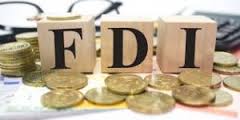 Amid a severe hit to the Indian economy by the Covid pandemic in the past eight months, the country’s foreign exchange reserves increased by more than $100 billion since the Covid-induced lockdown was enforced in March-end.
Amid a severe hit to the Indian economy by the Covid pandemic in the past eight months, the country’s foreign exchange reserves increased by more than $100 billion since the Covid-induced lockdown was enforced in March-end.
From $469.9 billion in the week ended March 20, 2020, the forex reserves jumped by $102.8 billion to a lifetime high of $572.7 billion in the week ended November 13, 2020, according to the data released by the Reserve Bank of India.
Importantly, the reserves grew by $4.277 billion from the week ended November 6, 2020. The jump was on account of Foreign Currency Assets (FCA), a major component of the country’s reserves, that increased by $5.526 billion to $530.2 billion from $524.7 billion in the preceding week.
However, the gold reserves reduced by $1.233 billion from $37.587 billion to $36.354 billion in the week. On the other hand, the special drawing rights with the International Monetary Fund (IMF) were unchanged from the preceding week at $1.488 billion, the data showed.
Foreign portfolio investors (FPI) have invested Rs 49,553 crore in Indian markets in November so far on the back of high liquidity along with improving global indicators and clarity after the US presidential elections, PTI reported.
The investment stood at Rs 44,378 crore in equities and Rs 5,175 crore in the debt segment between November 3-20 while FPI’s October investment was Rs 22,033 crore.
On the other hand, India saw its highest ever Foreign Direct Investment (FDI) during the first five months April-August of the current financial year. The total inflow was $35.73 billion, according to the Ministry of Commerce and Industry that was also 13 per cent up from the year-ago period.
Meanwhile, bank credit grew 5.67 per cent to Rs 104.04 lakh crore in the fortnight ended November 6, 2020, according to the RBI data.
The bank credit stood at Rs 98.46 lakh crore in the fortnight ended November 8, 2019. Moreover, deposits had jumped 10.63 per cent to Rs 143.80 lakh crore from Rs 129.98 lakh crore during the said period.
Source: Financial Express



